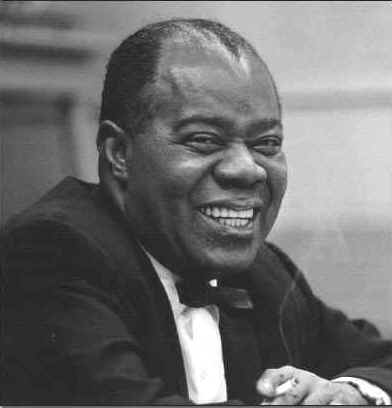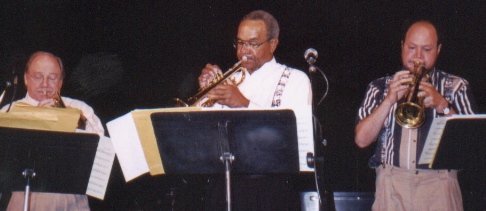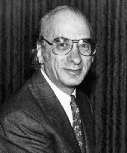
Louis Armstrong. Photo © William Carter 1962, used with permission. Taken backstage at a Cornell U concert.
You might remember seeing him on television. The showman with the white handkerchief, the sandpaper voice, and a smile that seemed to span continents. You might have heard him on radio and jukeboxes—an old guy who scored Top 40 smash hits with "Mack the Knife," "Hello Dolly" and "What a Wonderful World."
That was Louis Armstrong. But he was much more.
He was the first great soloist in jazz. Many would agree that his equal on trumpet has not appeared—thirty years after his death. Although his roots ran deep in New Orleans traditional jazz, he virtually invented swing. And the bebop trumpet player Dizzy Gillespie said of Armstrong, "No him, no me."
To his fellow musicians, Louis was a giant. At a jam session in Harlem's Rockland Palace, cornetist Rex Stewart watched in awe as Armstrong took the stage. "Somehow," he said, "the way the lights reflected off his trumpet, it looked like he was holding a wand of rainbows or a cluster of sunlight—instead of a horn."
The man who held a cluster of sunlight was born in the dark shadows of poverty in a New Orleans neighborhood so menacing it was called "The Battlefield."
We now know that his birth date was August 4, 1901, not as he patriotically insisted July 4, 1900.
If anyone deserves to have two birthdays, it's Louis Armstrong. This edition of Riverwalk Jazz is another in our series of special broadcasts celebrating the 100th birthday of "the man who taught the world to swing"—a three-trumpet salute to the musical genius of Louis Armstrong. Joining The Jim Cullum Jazz Band on stage at the Crest Theatre at the annual Sacramento Jazz Jubilee are three special guest artists. At the piano our good friend Dick Hyman, and teaming up with our own Jim Cullum for a three-horn salute to Louis Armstrong, San Francisco trumpeters Allen Smith and John Capobianco.
The centerpiece of this radio show is a set of special arrangements for jazz band, created by Dick Hyman. Using note-for-note transcriptions, Dick orchestrated for three trumpets Louis Armstrong's legendary trumpet solos from the 1920s' Hot Five and Hot Seven recording sessions.
Here's what jazz critic and author Gary Giddins wrote about those sessions: "If Armstrong had stopped playing music after his December 12, 1928 recording session, he would not have exerted the full measure of his charisma as a singer; or recorded dozens of unparalleled big band performances. He would not have enjoyed the pop hits and movies; he would not even have earned the nickname 'Satchmo.' But he still would be the most eminent figure in jazz history." We're lucky that Louis Armstrong went on to make music for more than thirty years after those historic 1928 recording sessions.

It takes three musicians to
attempt what Louis Armstrong
accomplished by himself with
his Hot 5 and Hot 7 in the
1920s.
L. to R.: Jim Cullum, Allen
Smith and John Capobianco at
the Crest Theatre in downtown
Sacramento.
These Dick Hyman arrangements for three horns were first performed at Carnegie Hall in New York in 1974, and later featured in a Soviet Union and Eastern European Tour in 1975. Most of the Carnegie Hall performance was captured on a record album, Satchmo Remembered. The three trumpet players for those original performances were Mel Davis, Joe Newman and Pee Wee Erwin.
Photo credit for home page teaser image: Louis Armstrong. Photo © William Carter 1962, used with permission. Taken backstage at a Cornell U concert.
©2001 by Margaret Moos Pick. Script development by Ron Fimrite


